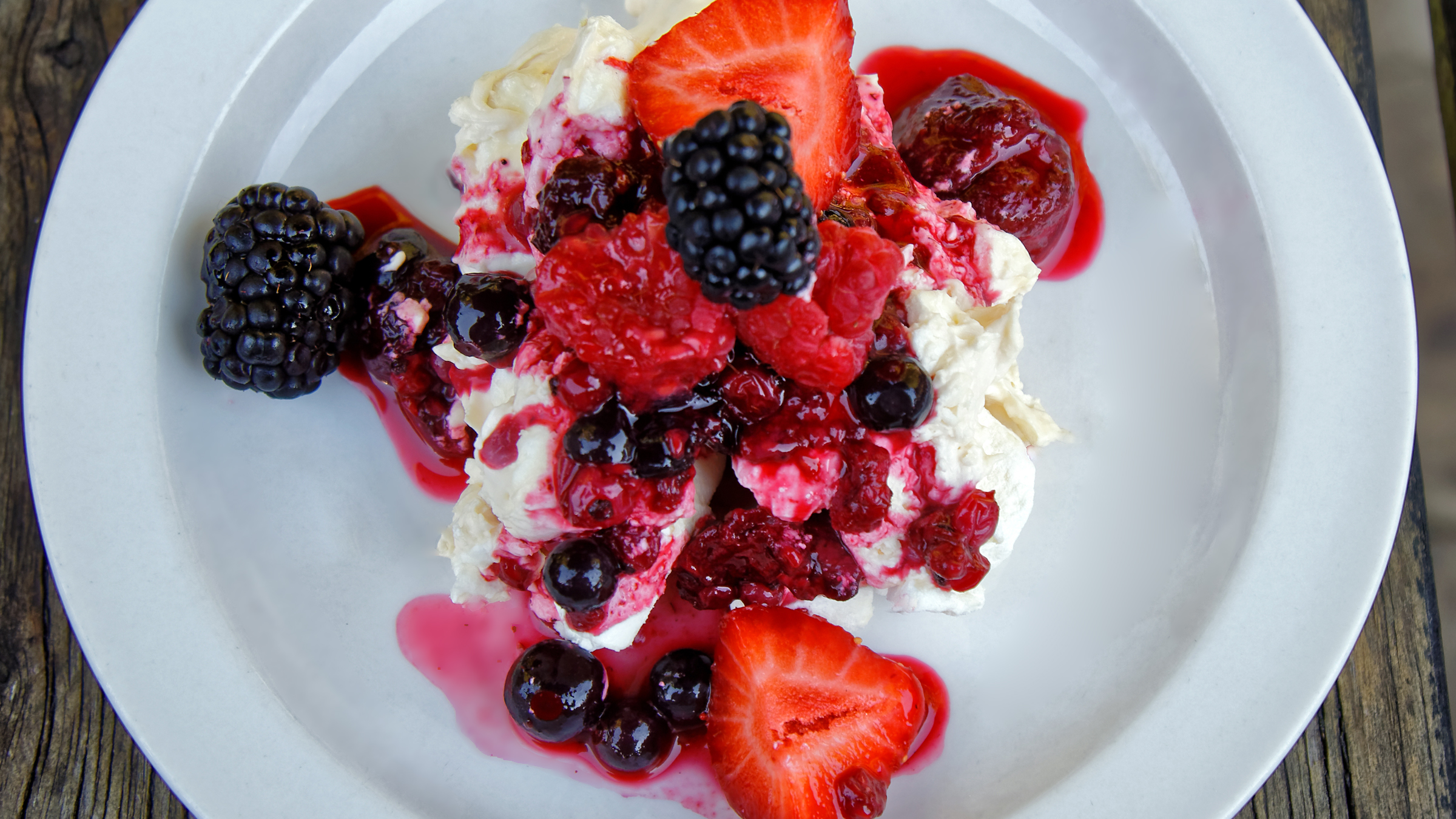Twenty of Great Britain’s prime ministers have been schooled at Eton College, including its first, Robert Walpole, in 1721, and the current incumbent (for now) Boris Johnson. For anyone unfamiliar with Eton Mess, we should perhaps start by explaining that the name is in no way a commentary on the state of British politics or the Conservative Party, but is instead a much-loved British dessert that is as inexplicably delicious as it is chaotic in appearance.
The Eton connection in its name derives from the fact that the renowned school is credited with having first created the dish, and for serving it at its annual cricket match against Harrow School. If a dessert comes with the endorsement of ravenous schoolboys or cricketers, then you can be sure that it will be hard to resist.
A Classic Eton Mess
Traditionally enjoyed in summer, Eton Mess is beguilingly easy to create, consisting of a rough mix of crunchy chunks of meringue, lashings of whipped cream, a fruity strawberry sauce and, ahem, well, that’s it. The most refined and elevated of desserts boast recipes containing words and phrases such as ‘slice’ and ‘assemble’ or ‘balance’ – all denoting the utmost care, complexity and precision. Eton Mess is different, very different. Take a glance at any recipe for Eton Mess – trust us, a glance is all you will need given the simplicity of the dish – and you can instead expect words such as ‘dollop’, ‘lump’ or ‘drop.
Trust us, this is a dish that anyone can make.
A Cheffy Eton Mess
If you want to experiment with the dish, it can be elevated either by throwing in additional or alternative ingredients, or by presenting it in a more sophisticated way than just slopped onto a plate.
Many British lovers of Eton Mess, author included, are tempted to throw in other summer fruits such as blackberries, raspberries or blackcurrants. If these are fresh from your garden or foraged from your local area, then the intense flavour will be hard to resist. More radical culinary minds offer slices of banana as an alternative to strawberries, although this means sacrificing the appealing pop of colour in the dish.
In terms of presentation, if your need is great then appearance will be less of a priority, but Eton Mess’s layered blend of colours can make it a highlight when served in more elegant glasses rather than plates or bowls.
However you prepare or present the dish, the choice is yours. Eton Mess positively invites experimentation and is hard to get wrong. What’s the worst that could happen? It ends up looking a mess?
[Photo at top © Acabashi; Creative Commons CC-BY-SA 4.0]














Sorry, the comment form is closed at this time.